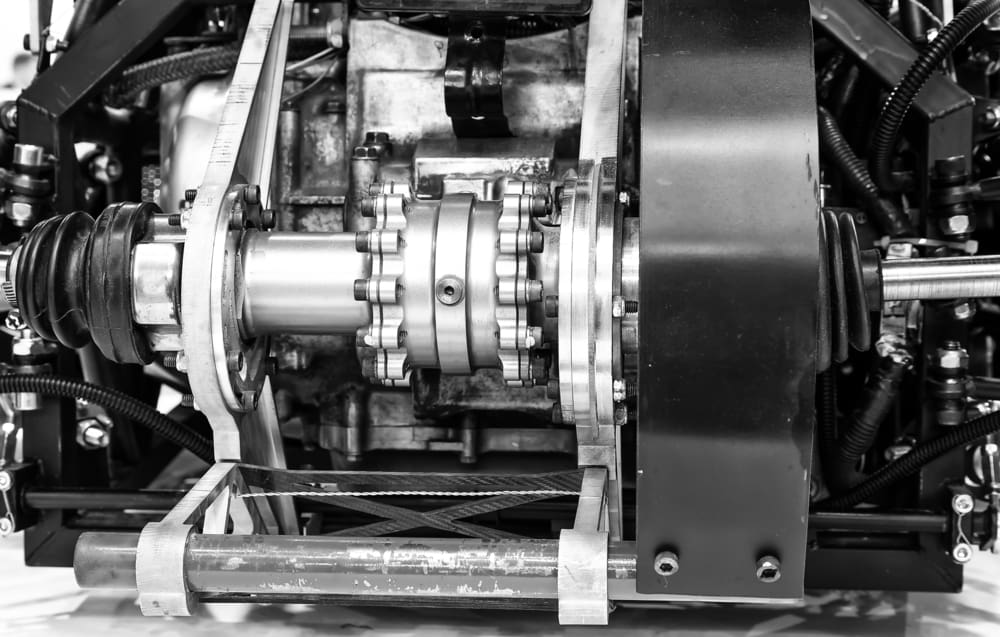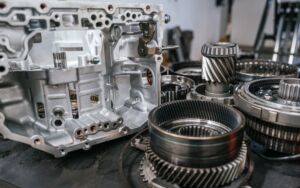Your transmission is the heart of your vehicle, playing a critical role in power distribution, particularly in four-wheel-drive or all-wheel-drive vehicles. When this all-important component is damaged, it can cause more than just a lack of traction—it can result in transmission failures and repairs. The key to preventing these major issues is understanding your transfer case and how it impacts your transmission.
The transfer case is responsible for directing power from the transmission to both the front and rear axles. When functioning properly, it ensures smooth and even power distribution. However, when problems arise, it can cause a ripple effect, disrupting every aspect of your vehicle.
Read on to find out how a bad transfer case can damage your transmission.
The Domino Effect: From Transfer Case to Transmission Trouble
How does a bad transfer case damage your transmission? Here are a few key ways:
Increased Wear & Tear
A malfunctioning transfer causes uneven power distribution, increasing the strain on the transmission components. Imagine trying to run a marathon with one leg weighed down—the other leg would have to work harder to get you across the finish line. Similarly, your transmission experiences unnecessary stress, leading to premature wear and tear on gear, bearings, and clutches, requiring transmission repair.
Vibrations and Shock
A failing transfer case can produce excessive vibrations and shocks that travel through the drivetrain and into your transmission. These vibrations can loosen internal components, damage seals and cause leaks. The jarring caused by a bad transfer case can also damage your transmission by causing cracks and fractures.
Fluid Loss and Contamination
The transfer case uses its own fluid for lubrication and cooling. When a seal in the transfer case fails, or if the case itself is damaged, this fluid can leak, or contaminants can enter. A lack of proper lubrication can raise friction and heat inside the transmission, increasing the rate of wear and tear. This issue can also translate to the transmission, leading to repairs.
Resistance
A bad transfer case can cause binding or resistance in the drivetrain, damaging the transmission. This resistance requires the transmission to work harder to maintain speed and power, increasing the heat and stress on the system. Over time, this heat will damage the components of the transmission.
Recognizing the Signs of a Bad Transfer Case
Avoid costly transmission repairs with regular maintenance and by recognizing the signs of trouble. These can include:
Grinding or clunking, especially when shifting into or out of four-wheel drive
- Vibrations or shaking while driving
- Difficulty shifting gears
- Fluid leaks under the vehicle
- Uneven tire wear
If you notice any of these symptoms, have your vehicle inspected immediately.
Don’t Let a Bad Transfer Case Stop You In Your Tracks: Visit Dot Transmissions
If ignored, a bad transfer case can lead to serious transmission damage. Avoid costly repairs and unexpected breakdowns with routine maintenance at Dot Transmissions.
Our expert technicians will:
- Check and replace your transfer case fluid
- Inspect seals and gaskets for leaks
- Examine your drivetrain for wear and tear
Noticing signs of a bad transfer case? Come in for a full vehicle inspection. We’ll diagnose the issue and let you know if you need a simple tune-up or transmission repair.
With years of specialized experience, Dot Transmissions provides trusted, affordable transmission service in Edmonton.
Contact Dot Transmissions for more information or to book an appointment.






